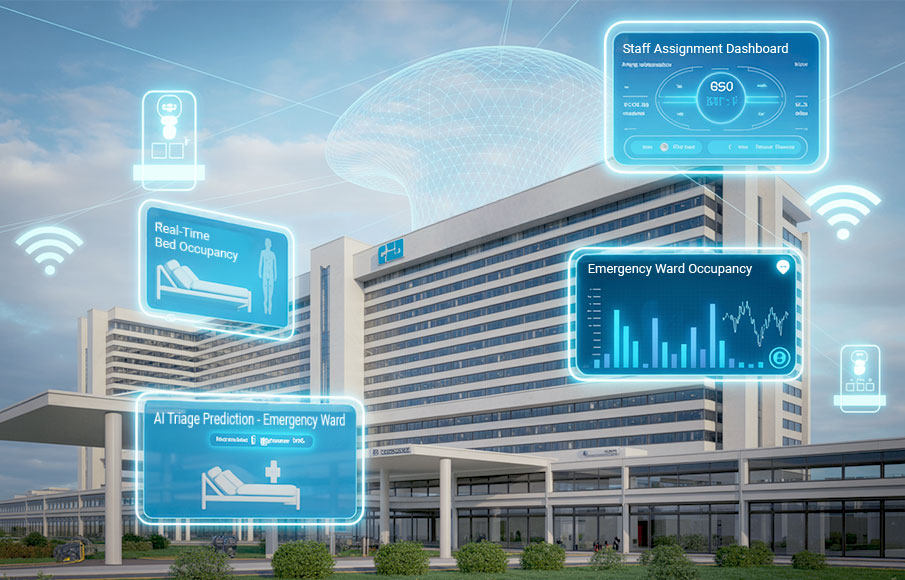The Trend Towards SDN
- 12 October 2021

How the COVID-19 Pandemic Supercharged the Digitalisation of the Network
The last year presented a unique and unprecedented challenge for companies and employees alike. The global COVID-19 health crisis forced many companies to pivot their operations swiftly from shared work spaces like the corporate office to their private homes. Work from home and remote working became commonplace, as companies and countries instituted safe distancing measures to protect their employees.
This dramatic shift meant that employees and companies had to jointly solve how to work in this ‘new normal’.
In addition, telecommunications companies were caught off guard with the sudden spike in bandwidth demands. Singapore’s internet service providers reported a surge in internet data traffic of as much as 60%. This resulted in severe bandwidth crunch as companies could not scale up fast enough to support this rapid change.
Through this lens, the pandemic exposed significant shortcomings in the world’s digital transformation at that time. It showed that telco providers were currently facing significant hurdles to cope with companies’ growing bandwidth demands amid their push for digital transformation. Capgemini revealed that “less than half (48%) of consumers feel that the connectivity services that they have today adequately meets their remote work and education needs”.
As such, companies wanting to push forward with their digitalisation efforts to future-proof their organisation need to consider their own network infrastructure. With the growth of online collaborative tools together with the implementation of new innovative technologies such as artificial intelligence and the Internet of Things (IoT), it is critical that businesses rethink the readiness of their network. With a fast, reliable network infrastructure, businesses can focus on fully unlocking the potential of implementing new technologies and turning into more agile enterprises.
Is your network lagging behind your business needs?
Our digital futures depend on connectivity, data, and intelligence. More and more companies are exploring new innovative technologies such as artificial intelligence and cloud computing to help take their business to the next level. However, it is key that IT managers ensure that the network configuration can support them.
How ready is your network? Do a quick self-assessment by considering the following questions:
- How resilient/reliable is your network? Does it ensure maximum uptime for your cloud applications and connected IoT devices?
- How flexible are you to scale your connection bandwidth when network demand exceeds expectation? Or will you be caught out?
- How ready are you to defend against new and rapidly changing cyber threats brought about by digitalisation?
- How quickly can you support the network requirements of your remote workforce, who are either working from home or in international branches?
If you are unable to answer any of the above, it is time for you to consider upgrading your network infrastructure.
Optimising and future-proofing your network
When looking to future-proof their networks, businesses should revisit their network strategy – and consider the implications of remaining on a traditional, legacy network compared to the benefits a more modern Software-Defined Network (SDN) offers.
Traditional legacy networks are hardware-based, where each switch, router and other device has its own designated purpose. In order to make any changes or updates, IT managers need to troubleshoot the devices individually, a process that can get very complicated and cumbersome quickly.
Unlike traditional networks, a SDN enables an easier end-to-end visibility across all the networks where IT managers can make changes easier. These can also be done remotely through the control panel. SDNs afford businesses the requisite flexibility and agility that are key components for their ongoing and future viability.
Why choose SPTel’s end-to-end SDN network?
Digitalisation is not a one-off IT deployment. It requires IT managers and leaders to continuously adapt and calibrate according to their company’s needs with each new technological innovation.
SPTel’s integrated end-to-end SDN offering provides companies with the necessary technological expertise and flexibility to tackle the challenges of tomorrow. Customers can look to SPTel as an award-winning, trusted partner in their network needs:
- Enhanced Cybersecurity: SPTel’s leading clean pipe capabilities network alerts customers proactively when a DDoS attack has been detected and, in addition, IT managers can choose to mitigate the attack in real time with cyber security on demand. This on demand capability extends to security solutions such as vFirewall which can be deployed in minutes and scaled as needs grow. As such, companies can rest assured that their network is protected, and they can take immediate actions once an attack takes place.
- Flexibility without Lock-Ins: Through dynamic resource allocation, customers can adjust their bandwidth through a few clicks in SPTel’s customer portal directly. Companies can react swiftly to changing demands, such as supporting more virtual applications and collaboration tools. Should there be a drop in demand, customers can easily revert to their original subscription to avoid wasting resources and reducing their cost of ownership.
- Agility: With direct access to all network information through the customer portal, companies are only a few clicks away from receiving a quotation. Eliminating long, manual quotations enables businesses to swiftly react, which can have a direct implication on competitiveness and even the survival of the business.. Never miss a window of opportunity again due to slow processing of quotes!
- Visibility and Control: Regardless of the location of the employees, customers have full visibility over the network functions and cybersecurity protocols. In addition, they have the power to make changes anywhere, at speed, from an online portal. IT managers can now stay on top of network performance and optimise it easily as and when necessary. Coupled with SDWAN, management of the network can be extended beyond the company’s headquarters to the home or even international branches, a key need in today’s landscape of restricted travel.
The time for one-size-fits all telco offerings are over. It’s time for your needs to be supported by a digitalised telco.













